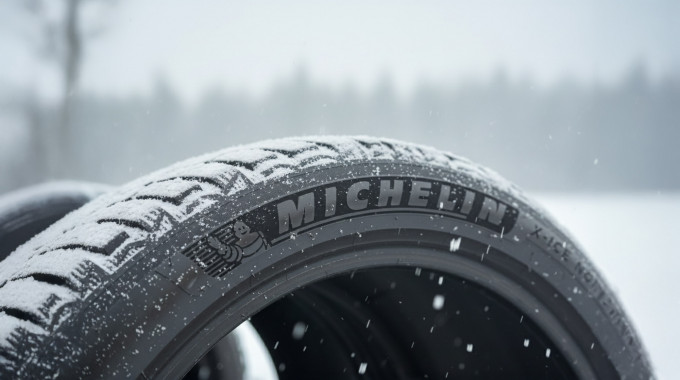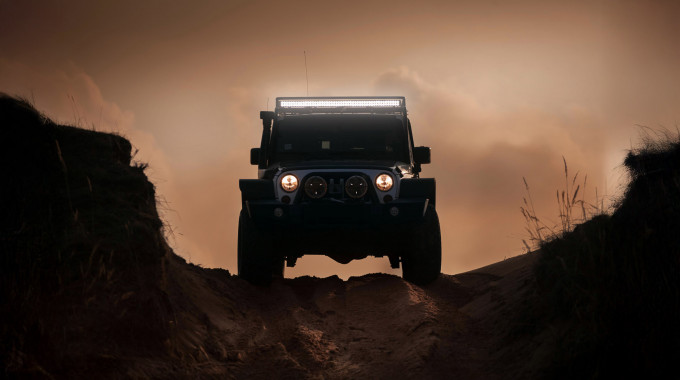
SUV Comparison: 2023 Mazda CX-50 vs 2022 Toyota RAV4
Canadians sure love their SUVs these days, and we’re spoiled for choice when shopping for one. At last count, there were more than 130 different models here in Canada alone, and with SUV sales this year already approaching 1 million units, there’s surely a ute to suit darn-near everyone’s taste.
At the top of the list by a healthy margin, the Toyota RAV4 is the most popular new SUV with more than 60,000 of them reaching Canadian driveways each year for the last few years.
Mazda’s CX-5 is a very competitive model, yet still sells less than half the number of RAV4s. This year, Mazda has splintered the segment further by introducing a complementary model: the CX-50 that promises more adventure and style, so we thought it best to see how it measures up against the category leader.
Best Styling: Mazda CX-50
Leaner, meaner and fresher, the Mazda looks better

This latest generation of RAV4 looks more angular and grown up than any previous version, but there are lots of angles -- maybe too many – and its face just looks perturbed with that frowning grille and sharp headlights.
It’s certainly not a bad-looking SUV, but its proportions and tall profile resembles most of the other vehicles in its class, and the popularity of the RAV4 means we see these things coming and going everywhere.

Meanwhile, Mazda’s designers have been doing a great job of giving the full line-up a strong familial resemblance, but also managing to keep a sporty, yet high-end look. Indeed, the exaggerated black wheel arch moldings notwithstanding (a trend du jour for supposedly rugged, off-road-type vehicles), it’s a very clean and sophisticated style.
What’s more, with the height of the greenhouse reduced, the CX-50’s overall profile is squatter and dare we say, sportier, rather than the typical tall, boxy compact SUV.
Best Interior: Mazda CX-50
Rumours persist that Mazda is moving upscale, this interior proves it

As a GT trim, our CX-50 is the highest grade available, and it’s equipped accordingly. The front seats are heated and cooled (rear outboard seats are also heated), the steering wheel is heated, there’s a head-up-display, plus a big, airy panoramic roof. But beyond that, it’s the finishes and detail elements that really set the Mazda apart from its competitors.
The black leather seats are piped with a taupe, cable-like accent, and the accent stitching down the centre of the seats, dashboard and door trim is done in an x-pattern. It’s a little thing, but it’s the sort of detail a driver sees every time he or she gets into the car and it feels special.
Pragmatists will appreciate Toyota’s sensible approach to interior design. Beyond the multitude of layers, corners and curves styled into the RAV4’s interior, there isn’t much pomp or fanfare. Materials are sturdy and well-assembled, but not fancy.

The seats are covered in Toyota’s durable faux leather, and are also heated and cooled up front, with the outer rears heated, too. But where the RAV4 really shines is in ergonomic design with all controls within an easy reach, and key functions, like temperature control, volume and tuning managed by simple, effective knobs.
Likewise, the other controls are handled with actual buttons (not the slick, but tedious touch panel interfaces so many manufacturers are implementing these days).
Both SUVs feature navigation integrated in their infotainment systems, and while the RAV4’s is closer to the driver and easier to reach, it’s a smaller screen with dull graphics. While the last point might seem trivial, the back-up camera’s display on that screen is so dark and poor that it’s of limited use.
Mazda’s still utilizing a rotary knob for much of the infotainment systems control, if only because the wide screen is mounted more in line with the driver’s sight, but further out of reach for the touchscreen. For most operations, it works fine (along with the volume knob mounted on the centre console instead of the dashboard), but using it for Apple CarPlay can be a bit frustrating.

Both machines have wireless charge panels, but only the Mazda’s system can connect to a smart phone wirelessly.
Those prioritizing utility in their SUV will appreciate the RAV4’s larger cargo capacity, whether the rear seat is up or folded, and that stylish low roof height on the Mazda sacrifices rear seat headroom with about 50 mm less than in the Toyota for tall hats and hairdos.
Best Performance: Mazda CX-50
Acceleration, handling and braking is all superior in the Mazda
Picking the CX-50 here for performance comes with a big asterisk. The RAV4 Limited with its normally-aspirated, 2.5L inline-4 puts out a respectable 203 hp and 184 lb-ft of torque, that measures well against the CX-50’s own 2.5L inline-4 with 187 hp and 186 lb-ft of torque.
The Toyota certainly doesn’t accelerate with any sort of ferocity, but it gets the job done (even if it makes a lot of noise doing so). In that fight, based on power alone, the RAV4 held its own, but Mazda unleashed its not-so-secret weapon for our test and our CX-50 came with the $2,500 Turbo option.
With that, the Mazda jumps to 227 hp and a whopping 310 lb-ft of torque on regular gas. Throw in some 93-octane and the numbers jump to 250 hp and 320 lb-ft. It’s enough of a power difference to be immediately felt whether accelerating from a standstill, down an on ramp or past slower traffic at speed, and beyond the added thrust, it simply reinforces the premium experience of the CX-50.
Towing capacity
The gutsy engine also enables the Mazda to tow more at 1,588 kg (3,500 lbs) compared to the Toyota’s car-like 680 kg (1,500 lbs). Still, different trims can even things out and a normally-aspirated CX-50 is rated at 907 kg (2,000 lbs), but a RAV4 Trail is rated for 1,588 kg, so shoppers need to choose carefully if their plans include hauling a small trailer.
The Mazda’s handling presents a more sophisticated suspension tuning, managing body motions better, while also offering better grip, yet the ride quality isn’t sacrificed. The RAV4 rides well enough, too, but its handling manners are just a little sloppier, showing that it’d rather not be rushed through the corners, thank you very much.
While Toyota doesn’t have a turbo option for the RAV4, it does have a ringer of its own in the form of a RAV4 Hybrid which utilizes electrification to give it more power and torque, too. And unlike the relatively fuel-thirsty Mazda, the RAV4 Hybrid achieves significantly better efficiency, averaging about 2/3 the fuel usage of the CX-50 Turbo. Our non-hybrid tester, the RAV4 is rated at roughly 1 L/100 km better on average than even the non-turbo CX-50.
Verdict: which compact SUV is the better buy – Mazda or Toyota?
Toyota’s RAV4 is wildly popular amongst Canadian shoppers for good reason. It’s efficient, practical and represents good value, plus it’s built right here in Canada. Buyers should also give the Hybrid version serious consideration. But of these two, it’s very much an appliance for transport with no passion for driving.
Mazda’s CX-50 gives up some practicality in terms of rear head room and luggage space, but still offers plenty more than the typical family sedan did just a few years ago. It’s a very stylish machine that looks, feels and drives much more costlier than its list price suggests, making it our pick of the two.
Specs: 2023 Mazda CX-50 GT Turbo Vs 2022 Toyota RAV4 Limited AWD
2023 Mazda CX-50 GT Turbo |
2022 Toyota RAV4 Limited AWD |
|
|
Base Price |
$45,350 |
$43,245 |
|
Engine |
2.5 L inline-4 turbo |
2.5 L inline-4 |
|
Transmission |
6 speed automatic |
8 speed automatic |
|
Drivetrain |
AWD |
AWD |
|
Peak Horsepower |
227 hp (Regular unleaded), 250 hp (Premium unleaded) |
203 hp |
|
Peak Torque |
310 lb-ft (Regular), 320 lb-ft (Premium) |
184 lb-ft |
|
Fuel Economy |
10.4/ 8.1/ 9.4 L/100 km cty/hwy/cmb |
8.8 / 7.1 / 8.0 L/100 km cty/hwy/cmb |
|
Cargo Space |
889 / 1,595 L (seats up/ down) |
1,059 / 1,977 L (seats up / down) |
|
Towing Capacity |
1,588 kg |
680 kg |
|
Standard wheel - inches |
20 |
19 |
|
Ground clearance |
218.44 mm (8.6 inches) |
218.44 mm (8.6 inches) |







